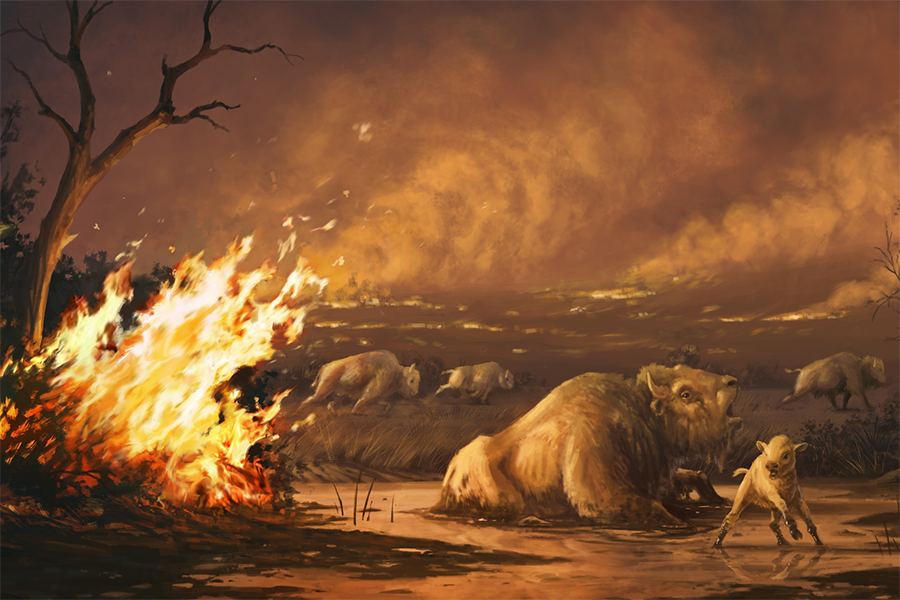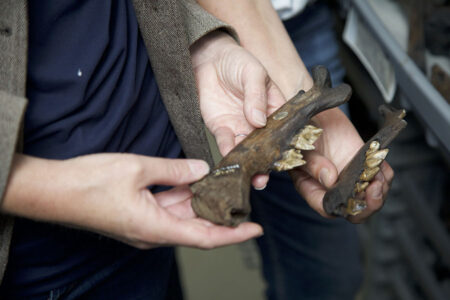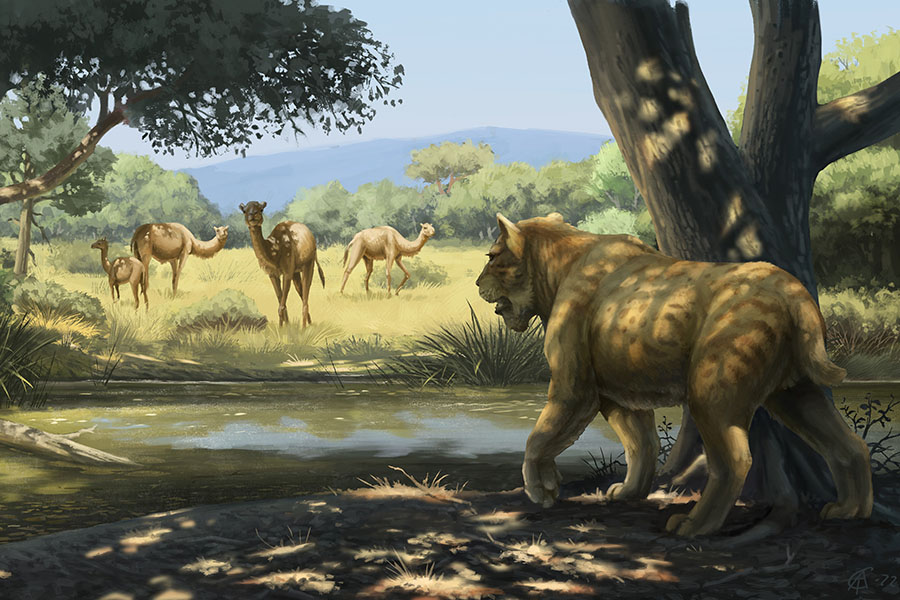
A study co-authored by Loyola Marymount University Biology Professor Wendy Binder and colleagues working at the La Brea Tar Pits found that massive fires started by humans, in a drying, warming, and increasingly fire-prone ecosystem, may have caused the extinction of saber-toothed cats, dire wolves, and other large mammals in the region nearly 13,000 years ago. The study, recently featured on the cover of Science, challenges several long-standing notions, including the theory that these animals perished primarily due to overhunting.

“Our findings show that all of the megafauna appear to decline as the climate warms and dries, but a key driver of extinction appears to be catastrophic fires that increase during this time,” explains Binder. “We argue that the likely cause is anthropogenic. Thus we meld the two general hypotheses of megafaunal extinction at the Late Pleistocene: that the extinction is environmental or human-caused and show them to be linked together.”
Binder, a longtime research associate at the La Brea Tar Pits and former chair of the Biology Department, is the lead on the nearly $800,000 National Science Foundation grant that provided the primary funding for the study. Her multifaceted role on the study included contributions to conceptualization, methodology, investigation, project administration, and more.
A substantial portion of the grant was used to radiocarbon date fossils preserved at the La Brea Tar Pits. Radiocarbon dating is a method that provides objective age estimates for carbon-based materials that originated from living organisms by measuring the amount of carbon-14 present in the sample. The team dated 169 specimens from the eight most common large mammal species, including saber-toothed cats, dire wolves, American lions, ground sloths, extinct horses and bison, camels, and coyotes. This effort alone roughly doubled the number of large mammal specimens dated for the Late Pleistocene era in North America.

Researchers compared those findings to regional pollen and charcoal records and continent-wide data on human and large mammal populations to develop “the first statistical modeling of extinction causality in Southern California,” as stated in their paper.
“With new technology and new research, we have been able to connect, for the first time, a dramatic increase in human population in North America to an incredibly intense period of fires and the interval when the megafauna disappeared from our region,” said co-author Emily Lindsey, associate curator at the La Brea Tar Pits.
The study’s findings, though based on events that took place more than 10,000 years ago, have relevance and applications today.
“The conditions that led to the terminal-Pleistocene state shift in southern California are recurring today in the western USA and in numerous other ecosystems worldwide,” the researchers noted. “Understanding the interplay of climatic and anthropogenic changes in driving this past extinction event may be helpful in mitigating future biodiversity loss in the face of similar pressures.”




